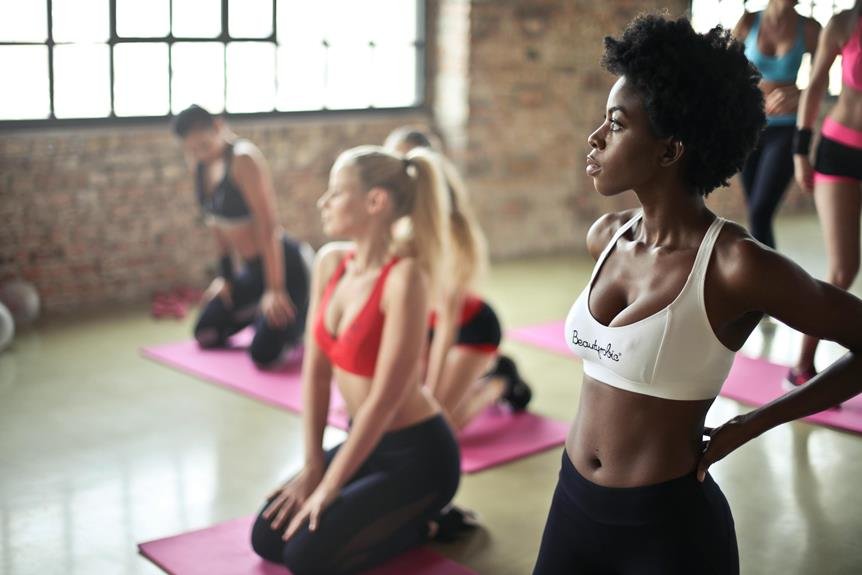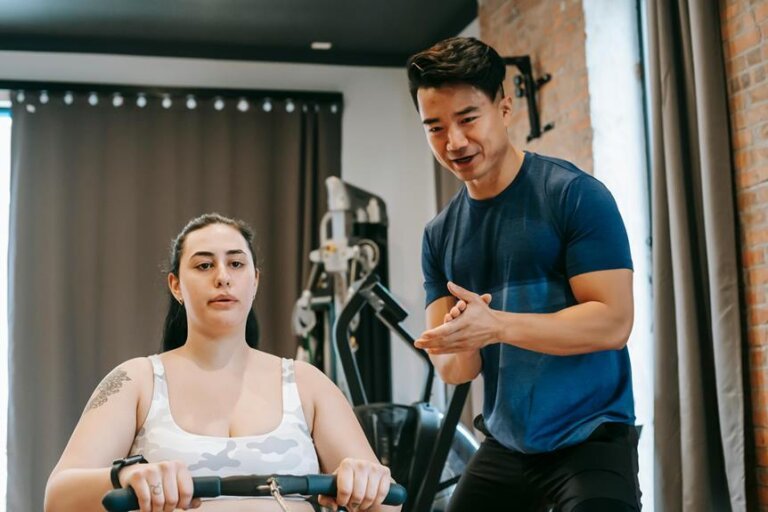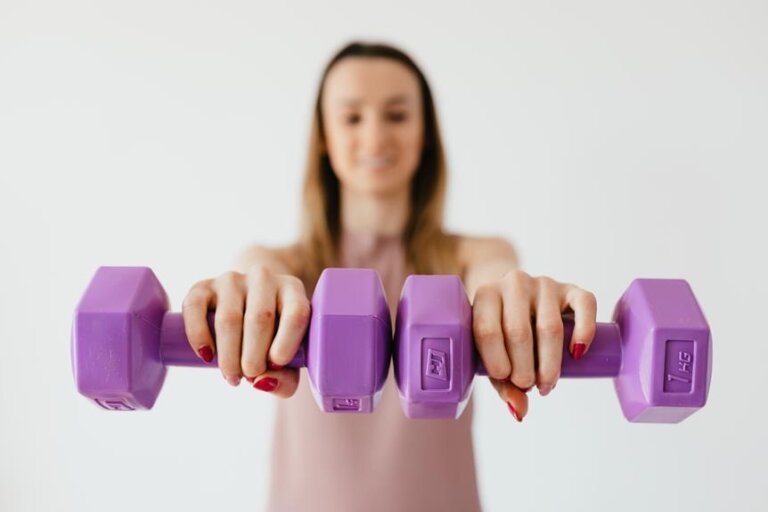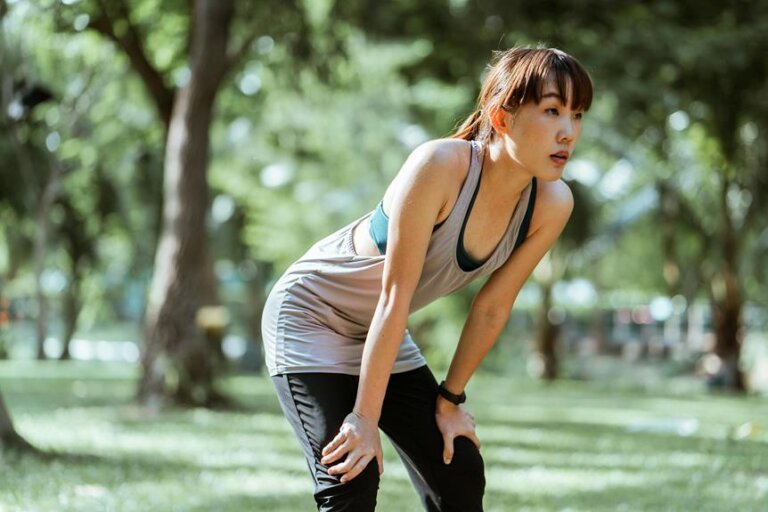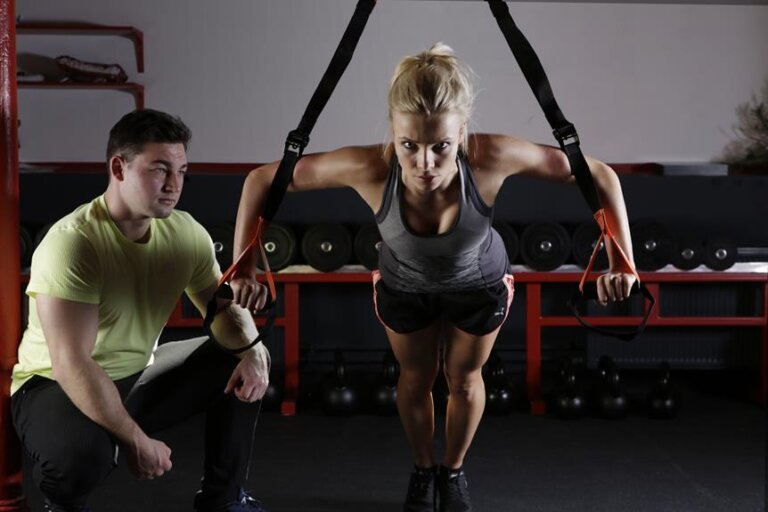Low-Impact Exercises for Seniors Looking to Stay Fit
Imagine your fitness journey as a gentle stream, where the flow of movement keeps you energized and strong.
Curious about how low-impact exercises can benefit your overall well-being?
Stay tuned to discover a variety of effective workouts tailored for seniors seeking to maintain their fitness levels while being mindful of their bodies’ limitations.
Benefits of Low-Impact Exercises
Engaging in low-impact exercises can significantly improve your overall physical health and quality of life as a senior. These exercises are gentle on your joints, making them ideal for those with arthritis or other joint issues. By incorporating low-impact activities like swimming or cycling into your routine, you can increase your strength, flexibility, and balance without putting excessive stress on your body.
Regular participation in low-impact exercises can also help prevent falls, a common concern for many seniors. Strengthening your muscles and improving balance through activities like tai chi or yoga can enhance your stability and reduce the risk of accidents. Additionally, these exercises can boost your mood and mental well-being by promoting the release of endorphins, the body’s natural feel-good chemicals.
Furthermore, low-impact exercises can aid in weight management and improve cardiovascular health. Even though these activities are gentle, they still provide an effective way to burn calories and maintain a healthy weight. Incorporating a variety of low-impact exercises into your routine can help keep your heart healthy and reduce the risk of conditions like heart disease and high blood pressure. By prioritizing these activities, you can enjoy a higher quality of life and maintain your independence as you age.
Walking for Cardiovascular Health
When walking for cardiovascular health, remember the numerous benefits it offers, such as improved heart health and increased stamina.
Focus on maintaining proper walking form to prevent injuries and maximize the benefits of this low-impact exercise.
Set achievable walking goals to gradually improve your cardiovascular fitness and overall well-being.
Benefits of Walking
Walking regularly helps strengthen your cardiovascular system, improving heart health and circulation. This low-impact exercise is gentle on your joints while effectively boosting your heart rate.
By engaging in brisk walking sessions, you can enhance your overall cardiovascular fitness, reducing the risk of heart disease, stroke, and high blood pressure. Walking also helps increase lung capacity and improve oxygen flow throughout your body, promoting better circulation.
Regular walks can aid in lowering cholesterol levels and maintaining a healthy weight, further benefiting your heart health. Additionally, this simple yet powerful exercise can uplift your mood, reduce stress, and enhance mental well-being.
Embrace the benefits of walking to keep your heart strong and your body healthy.
Proper Walking Form
To optimize the cardiovascular benefits of your walking routine, focus on maintaining proper form throughout your strides. Keep your head up, shoulders relaxed, and back straight. Engage your core muscles and swing your arms naturally. Land each step heel first, then roll through the ball of your foot to push off with your toes.
Take smooth, consistent strides and avoid overstriding, which can lead to injury. Maintain a steady pace that allows you to breathe comfortably. Remember to wear supportive, comfortable shoes and stay hydrated.
Setting Walking Goals
Start by determining your desired distance or duration for each walking session to effectively set and achieve your cardiovascular health goals. Walking is a great low-impact exercise that can significantly improve your heart health. Aim for at least 30 minutes of brisk walking most days of the week to enhance cardiovascular fitness.
Gradually increase either your distance or duration as you build stamina. Setting specific goals, such as walking a certain number of steps per day or reaching a particular distance within a set timeframe, can help keep you motivated and on track.
Remember to warm up before each session and cool down afterward to prevent injury and optimize the benefits of your walking routine.
Chair Yoga for Flexibility
Explore the benefits of chair yoga for flexibility with gentle seated stretches that can help you improve your range of motion.
Learn breathing techniques that promote relaxation and reduce stress, enhancing both your physical and mental well-being.
Gentle Seated Stretches
Gently move your body into comfortable seated positions to begin the chair yoga routine for flexibility. Start by sitting tall in your chair, feet flat on the floor.
Inhale deeply, raising your arms overhead, and exhale as you lean gently to one side, feeling the stretch along your torso. Hold for a few breaths, then switch to the other side.
Next, interlace your fingers behind your back, straightening your arms and opening your chest for a gentle shoulder stretch. Release and bring one knee towards your chest, holding it with both hands to stretch your lower back.
Remember to breathe deeply throughout the stretches to enhance flexibility and relaxation.
Breathing Techniques for Relaxation
To enhance your chair yoga routine for flexibility, focus on incorporating specific breathing techniques for relaxation. Deep breathing can help improve your flexibility by relaxing your muscles and increasing oxygen flow.
As you engage in chair yoga poses, concentrate on taking slow, deep breaths in through your nose and out through your mouth. This mindful breathing can enhance your body’s ability to stretch and move with ease. Practice breathing deeply and fully, allowing your breath to guide you into a state of relaxation.
Improving Posture and Balance
Enhancing your posture and balance through chair yoga can greatly improve your flexibility and overall physical well-being. Chair yoga offers a gentle way to work on your flexibility, especially if traditional yoga poses are challenging.
By incorporating chair yoga into your routine, you can focus on stretching and strengthening key muscles that support good posture and balance. The practice helps increase your body awareness and control, leading to better stability and coordination.
Simple movements like seated twists, side stretches, and forward bends can aid in improving your posture alignment and balance. Consistent practice of chair yoga can also help reduce the risk of falls by enhancing your core strength and stability.
Tai Chi for Balance and Coordination
Improving balance and coordination through Tai Chi can greatly benefit seniors’ overall physical well-being. Tai Chi, an ancient Chinese martial art characterized by slow and flowing movements, is a gentle form of exercise suitable for all fitness levels. This low-impact exercise helps seniors enhance their balance, stability, and coordination, reducing the risk of falls and injuries.
By practicing Tai Chi regularly, seniors can improve their proprioception – the body’s ability to sense its position in space – which is crucial for maintaining balance and preventing falls. The slow and deliberate movements in Tai Chi engage multiple muscle groups, helping seniors strengthen their core muscles and improve their overall posture.
Moreover, Tai Chi is known to enhance cognitive function, focus, and mindfulness, which are essential for maintaining coordination and balance. Seniors can enjoy the mental relaxation and stress-relief benefits of Tai Chi while simultaneously working on their physical well-being. Incorporating Tai Chi into a regular exercise routine can lead to improved balance, coordination, and overall quality of life for seniors looking to stay fit and healthy.
Swimming for Full-Body Workout
Swimming provides a full-body workout that can benefit seniors by improving strength, flexibility, and cardiovascular health. The water’s resistance helps to strengthen muscles without putting too much strain on joints, making it an ideal low-impact exercise. As you swim, your arms, legs, and core all work together to propel you through the water, toning and building muscle mass. This can enhance your overall strength and flexibility, making daily activities easier and reducing the risk of falls.
Moreover, swimming is a great way to improve cardiovascular health. By engaging in this full-body exercise, you can increase your heart rate, improve circulation, and boost lung capacity. This can lead to a healthier heart and lower the risk of cardiovascular diseases. Additionally, swimming is a low-impact aerobic exercise that’s gentle on the joints, making it suitable for seniors with arthritis or other joint issues. So, consider adding swimming to your fitness routine for a fun and effective full-body workout that offers various health benefits.
Resistance Band Training for Strength
Consider incorporating resistance band training into your routine to enhance your strength and muscle tone effectively. Resistance band exercises are gentle on your joints, making them ideal for seniors looking to build strength without risking injury. These bands come in various resistance levels, allowing you to start at a comfortable level and gradually increase the intensity as you get stronger.
With resistance band training, you can target specific muscle groups or engage multiple muscles at once, providing a comprehensive strength-building workout. These exercises can help improve your balance, posture, and overall functional fitness, making daily activities easier and reducing the risk of falls.
To get started, choose a set of resistance bands that suit your fitness level. Incorporate exercises like bicep curls, leg presses, shoulder raises, and chest presses into your routine. Aim for 2-3 sessions per week, focusing on different muscle groups each time. As you progress, you can add more repetitions or increase the resistance to continue challenging your muscles and seeing improvements in strength and tone.
Pilates for Core Stability
Enhance your core stability by incorporating Pilates into your exercise routine. Pilates focuses on strengthening the muscles in your abdomen, back, and pelvis, which are essential for maintaining good posture and balance. This form of exercise emphasizes controlled movements, breathing, and proper alignment, making it a low-impact option suitable for seniors looking to improve their overall fitness.
In Pilates, you’ll engage your core muscles through a series of movements that target specific areas such as the transverse abdominis and obliques. These exercises help stabilize your spine, reduce the risk of falls, and enhance your ability to perform daily tasks with ease. Pilates also promotes flexibility, which is crucial for maintaining joint health and preventing stiffness that often comes with aging.
Whether you’re a beginner or have previous experience with Pilates, there are various modifications available to suit your fitness level. Consider joining a Pilates class specifically designed for seniors or following along with online tutorials that cater to older adults. By incorporating Pilates into your routine, you can improve your core strength, stability, and overall well-being.
Frequently Asked Questions
Are There Any Specific Low-Impact Exercises That Can Help With Joint Pain or Arthritis?
When dealing with joint pain or arthritis, it’s essential to focus on low-impact exercises that can help improve flexibility and strength without causing additional stress on your joints. Consider incorporating activities like swimming, walking, or tai chi.
Can Seniors With Mobility Issues Still Benefit From Low-Impact Exercises?
Absolutely! Even with mobility issues, low-impact exercises like water aerobics or seated yoga can greatly benefit seniors. These activities boost strength, flexibility, and overall well-being. You can stay fit and feel great!
How Often Should Seniors Engage in Low-Impact Exercises to See Noticeable Improvements in Their Fitness Levels?
You should engage in low-impact exercises for seniors regularly. Consistency is key to seeing noticeable improvements in fitness levels. Aim for at least 3-5 sessions per week to maintain and enhance your health and mobility.
Are There Any Recommended Modifications for Low-Impact Exercises for Seniors With Pre-Existing Medical Conditions?
When dealing with pre-existing medical conditions, it’s crucial to consult with your healthcare provider before starting any exercise regimen. They can recommend modifications tailored to your specific condition to ensure your safety and well-being.
How Can Seniors Maintain Their Motivation and Consistency With a Low-Impact Exercise Routine?
You can keep your motivation up by setting small, achievable goals. Celebrate each milestone, like walking an extra block or holding a stretch longer. Consistency comes from making exercise a daily habit.
Conclusion
As you embark on your fitness journey, remember that like a gentle stream carving its path through the earth, low-impact exercises can have a powerful impact on your overall health and well-being.
Embrace the flow of movement, the strength of resistance, and the balance of mind and body that these exercises offer.
Stay committed and consistent, and watch as your body blossoms like a delicate flower in the springtime, thriving and flourishing with each mindful movement.https://wildhealthpodcast.com/
